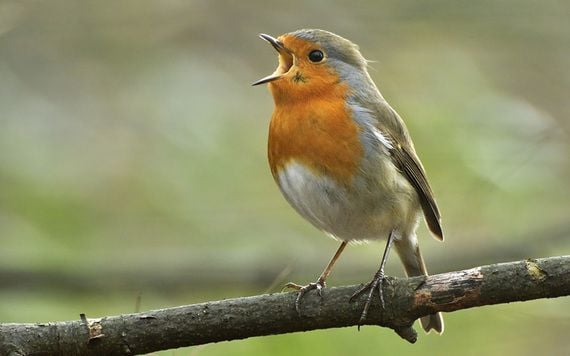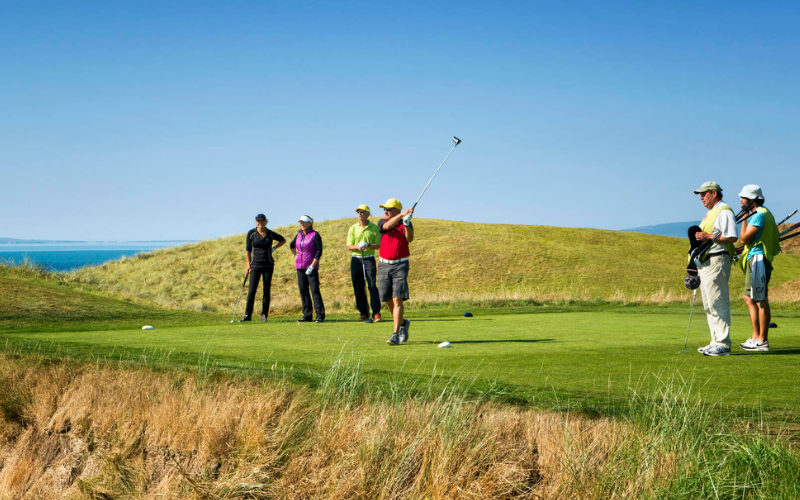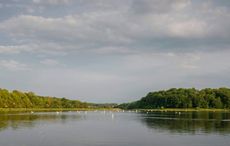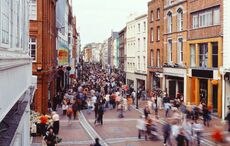Ireland is home to more than 400 species of birds, making it a prime location for birdwatching enthusiasts. Here are some of IrishCentral's favorite locations for birdwatching in Ireland.
According to BirdWatch Ireland, 450 different species of bird have been recorded on Ireland's shores. The island's rugged coastlines mean we have some of the best seabird views in Europe.
So, it’s time to get those binoculars out and witness the beauty on our doorstep.
Here are five of the top locations to watch birds in Ireland:
North Bull Island – Dublin
This is one of the best places to bird watch because of its triple habitat areas.
North Bull Island has an intertidal mudflat, sand dunes, and a large saltmarsh that encourages interesting species to feed, nest, and overwinter.
It was the first National Bird Sanctuary of Ireland designated in 1931 and it’s important as both a Special Protection Area and a Special Area of Conservation under the EU today.
You’ll spot shoveler, shelduck, pintail, and teal geese on the causeway, and plenty of wader birds on the saltmarsh where short-eared owls roost. The sand dunes attract peregrine falcons and merlin to hunt, and the mudflats are loved by grey plover, dunlins, sandpipers, and even the American golden plover.
There are so many birds to see on this 5 km long and 800 m wide island you’ll need a whole day and then some to see just a fraction. Good news then that there are plenty of facilities and it's connected to the mainland by Bull Bridge.
East Coast Nature Reserve, County Wicklow
East Coast Nature Reserve is a fairly new reserve that opened in 2009. It’s Ireland’s largest reserve at 89 hectares and forms part of the Murrough Wetlands - a Special Protection Area and Special Area of Conservation. Visitors can use two observation hides and specially constructed boardwalks seven days a week to bird watch.
The protections afforded to this reserve means there's a flourishing insect and flower life, which in turn attracts lots of birds.
Woodland glades attract finches, swallows, and swifts, and the wet grasslands are home to wigeon, whooper swans, hen harriers, and little egrets. More recently, short-eared owls, great spotted woodpeckers, and kingfishers have been spotted.
It’s taken no time at all for birds to discover this natural environment and take full advantage of it. If you love it too, volunteer to help out. It’s being restored by the charity BirdWatch Ireland.
Inishbofin Island, County Galway
Many of us remember the call of the corncrake, but we haven’t heard the kerrx-kerrx call of the male for years. That’s because it's suffering a major population decline, mostly due to intensive farming which harvests at the same time as our corn crakes nest.
Corncrakes are threatened with extinction but you can see them in very small numbers in North Donegal, West Mayo, Connaught and the popular tourist resort Inishbofin Island.
The first corn crake call of the year is usually heard here in April, but you’ll need to listen carefully and keep your eyes peeled because they are secretive!
Inishbofin is still home to the corncrake because it was free from farm machinery until the 1980s. A hand scythe gave the birds plenty of time to make an escape.
This island is also home to breeding seabirds and you’re likely to spot storm petrel, arctic tern, kittiwakes, herring gulls and choughs too.
Little Skellig, County Kerry
Off the coast of Co. Kerry the iconic Little Skellig is a BirdWatch Ireland nature reserve and seabird breeding colony.
It’s a great place to spot puffins, and who doesn’t love the brightly billed flightless tunneling birds that rely on our sea’s sand eel population.
As well as puffins you’ll spot 30,000 pairs of northern gannets, storm petrels, Manx shearwaters, razorbills, and other visitors from the crashing Atlantic.
You can’t land on Skellig Island but boat companies offer round trips. Remember your sea legs and waterproof binoculars for a close-up view of this iconic birdwatching paradise.

Are you planning a vacation in Ireland? Looking for advice or want to share some great memories? Join our Irish travel Facebook group.
Your garden
If heading out on a boat makes you feel queasy, one of the other best places to spot birds is in your back garden.
Pop the kettle on and sit back to admire collared doves, wrens, robins, black caps, siskins, finches, tits, sparrows, starlings, and magpie visitors.
If you don’t have many birds right now there are simple steps you can take to encourage them and boost their dwindling numbers.
Birds love protective shelter from predators. If you don’t have a hedge or anything leafy you can plant a tree. A small crab apple works just as well as a large oak. Evergreens such as pyracantha and ivy are attractive to shy birds too.
Put out water. A birdbath on the lawn and one raised up on a pedestal are essentials for birds because they drink and bathe to keep their feathers waterproof.
Put out food. Give nuts and seeds to finches, tits, siskins, wrens, and Blackbirds and thrushes love them too and also appreciate fruit. Fat balls, without wire mesh that traps bird legs, are life-savers in the cold months.
Switch to pesticide-free gardening. Just like our nature reserves, keeping your garden insecticide free encourages insects, butterflies and food sources for birds.
Build a home. Pop up a birdhouse in a sheltered shady spot and you might be lucky enough to spot fledglings in the spring. If you love technology, try a nest-cam for a Big Brother close up view.
Bird watching is one of life’s simpler pleasures. In the internet rush of gaming, live streaming and Facebooking the original Twitter is a chance for us to breathe in nature at its finest.
Bird watching is a simple joy and unspoiled Ireland is one of the most under-rated places to search them out.
Pull on your walking boots and grab your binoculars or settle down for an afternoon by the window. It’s all out there waiting for you.
*Originally published in January 2021. Updated in September 2023.
This article was submitted to the IrishCentral contributors network by a member of the global Irish community. To become an IrishCentral contributor click here.




Comments